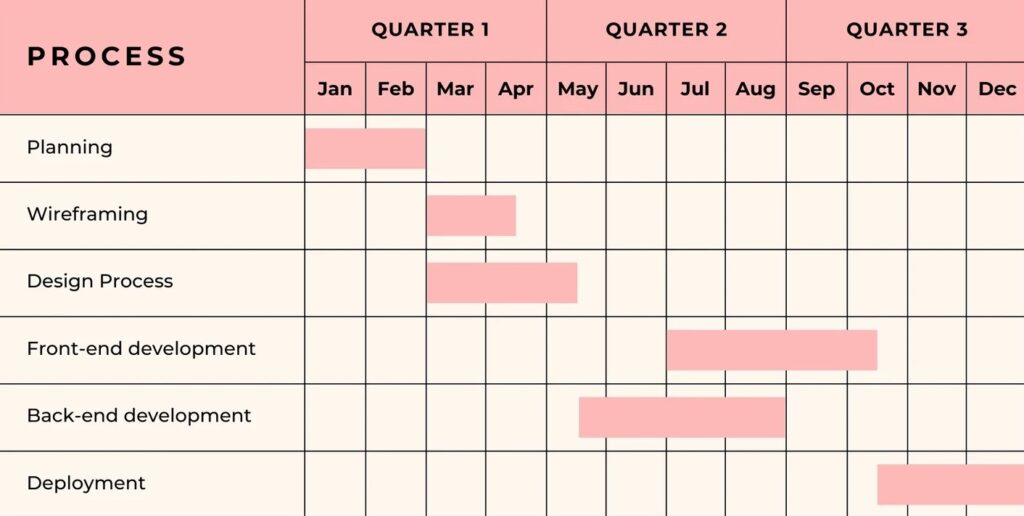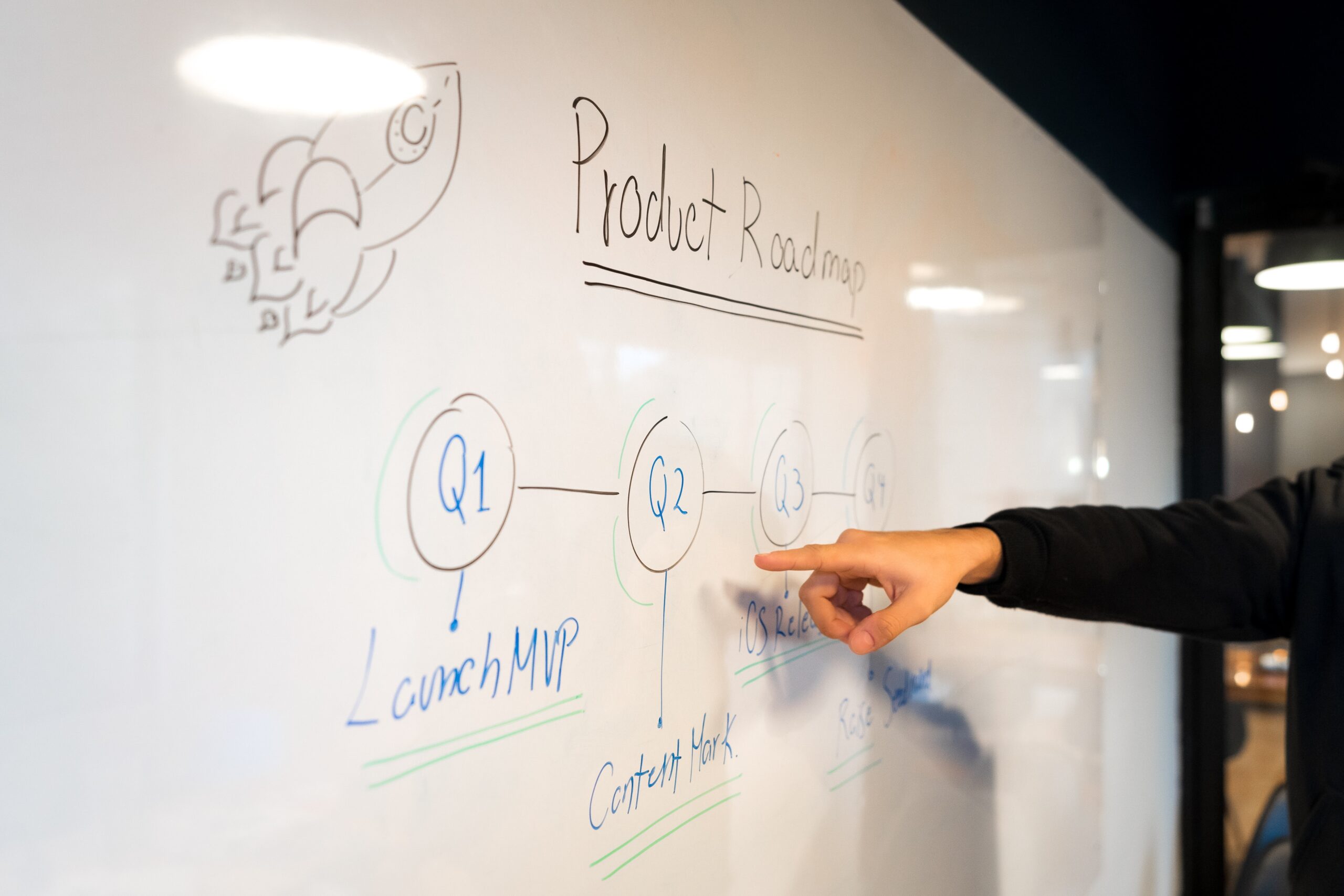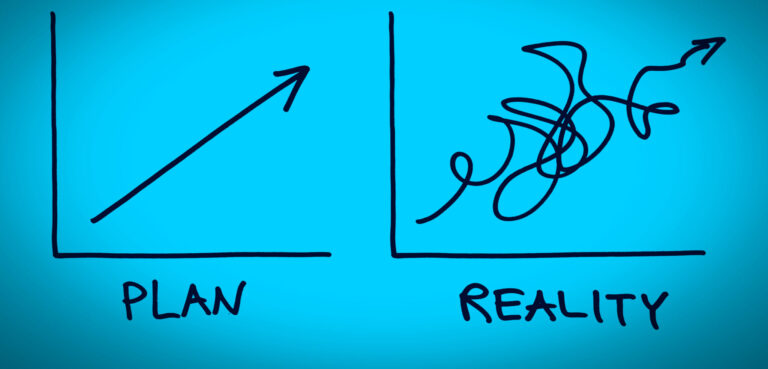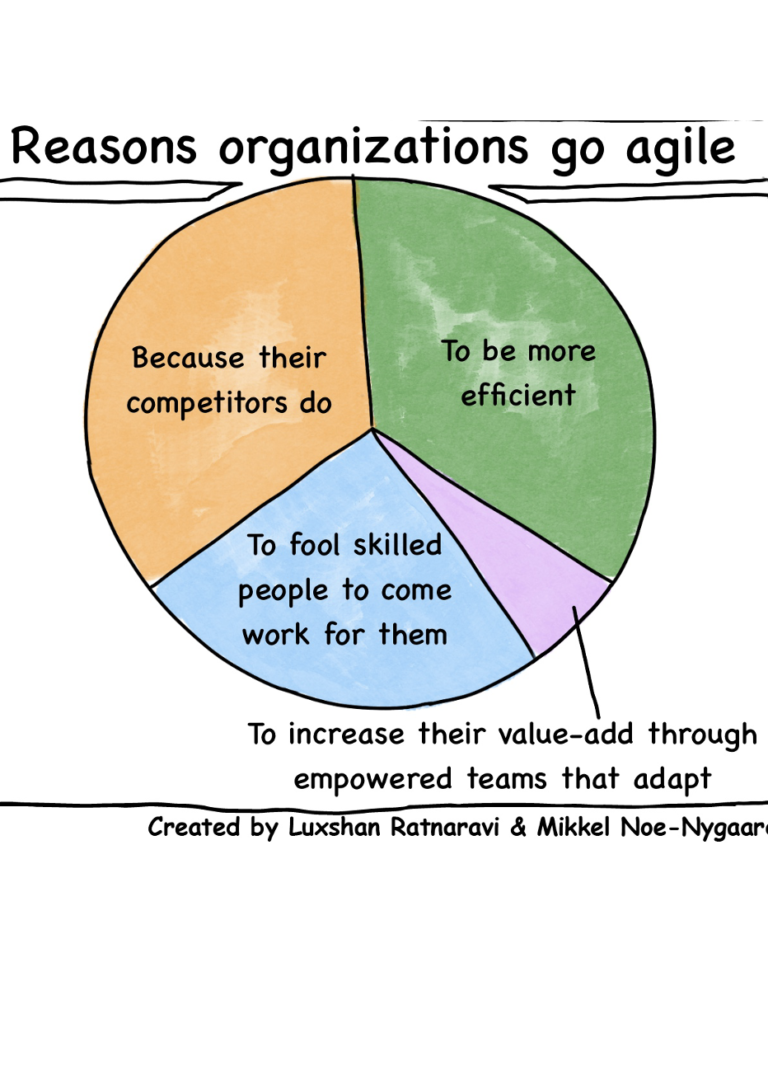Prioritised roadmap – all in one!
Prioritised roadmap - all in one!
Any business has a plentitude of priorities that it needs to work on. But how to choose the right priorities? How to reach alignment for all teams in a company on what should we do now and what can wait? How to establish a simple and clear roadmap for any business? That is an incredibly arduous mission for any business but this post will help you!
The traditional roadmap
Many of us are familiar with the Gantt chart type of roadmaps where the required time of each task is represented by a line. Usually, the tasks/ lines stack up on top of each other (tasks worked on in parallel) or continue one after another (tasks depend on each other) along some kind of timeline.

New roadmap style
Faced with the aforementioned and other limitations to the traditional roadmap practices – Janna Bastow came up with a novel approach to planning work – the “Now-Next-Later” roadmap. As she explains herself – this roadmap approach is
- More humane and flexible
- Allows for different levels of certainty
- Saves time
- Ties back to objectives
- Informs more impactful product decisions
This approach is simple – you have 3 columns or lanes. “Now” are the things that your teams should work on now, “Next” is something that your teams should work on next, and “Later”, obviously, is something that you may or may not work on at some point in the future. Now, you can surely assign some timing to these 3 categories. For example, “Now” is something that we’ll be working on in the upcoming 3 months.
The “Now-Next-Later” approach in my experience allows escaping the micromanagement of tasks and focusing on what’s important – what is the priority to work on now and what will come later in the time. In this way all the desires and plans are accounted for, however, the micromanagement of the order of things, as well as false promises and expectations are avoided.
In general people like the looks of Gantt charts. This kind of timeline seems very logical, it explains all the steps that will be taken, as well as indicates clear start and end dates (deadlines) for each activity. Potentially, you can even see interdependencies between the tasks. Sounds like a perfect plan – right?
The main problem with Gantt chart roadmaps is that they’re outdated when the project starts. Small changes at the top (read more about that here) of the roadmap cause dramatic shifts in the rest of the timeline. This type of roadmap needs to be constantly planned, replanned, and adjusted in its entirety. That’s a lot of overhead just to maintain the roadmap.
Another problem with Gantt chart roadmaps is that they are deadline-driven. Deadlines are set in a Gantt chart at first based upon inaccurate guesstimates that are perceived as commitments as soon as they’re recorded on the roadmap. Deadlines create pressure and lower team morale because the objective is shifting from delivering value to hitting a specific date.
Prioritisation frameworks
To decide on the correct the sequence of product or feature development – one has to set clear priorities. But how to arrive at the right priorities? There are several prioritisation frameworks that the teams can decide to use. Naturally, the pros and cons (benefits and costs) of each opportunity have to be evaluated and assessed to focus on what brings the biggest business value. However, a comparison of different opportunities has to be done on equal measures. Here’s a summary of the most popular prioritisation frameworks:
Impact vs. Effort Matrix: With this approach, each prospective feature or upgrade to a product is evaluated in terms of both the effort necessary to execute it and the potential impact it may have on users or business outcomes. Prioritised first are items that have the most impact with the least amount of work.
Kano Model: divides features into three groups: essentials, performance requirements, and delighters. By determining which features fall into each category and concentrating on delighters, which can offer a considerable competitive advantage, features can be prioritised.
MoSCoW: technique divides specifications or features into four categories: must-haves, should-haves, could-haves, and won’t-haves. As a result, stakeholders are better able to understand what must be included in the product and what can be delayed or left out.
RICE Scoring: Reach, Impact, Confidence, and Effort are measured using the RICE scoring system. Each of these considerations for potential projects or features is given a score by product teams. (Reach x Impact x Confidence) / Effort is the formula for prioritisation, which aids in identifying high-impact, low-effort activities.
Weighed Shortest Job First (WSJF): SAFe (Scaled Agile Framework) and Agile workplaces frequently employ WSJF. Each item is given a priority score by taking into account the expense of a delay, the size of the work, and other variables.
Eisenhower Matrix: it divides tasks into four quadrants based on their relevance and urgency. The following categories are used to prioritise tasks: Do First, Schedule, Delegate, or Eliminate.
Surely there are many other prioritisation frameworks out there. Additional considerations such as budget and resource constraints, strategic alignment, customer feedback/ requests, risks vs rewards – all have to be taken into account when prioritising. In fact, it is not so important which framework is chosen – as long as you follow one or two of them (see next).
Blending roadmap with priorities - the ultimate prioritised roadmap
To arrive at the ultimate prioritised roadmap – you just have to blend the two things – roadmap and prioritisation framework. This can be done in a simple matrix structure: create a table with 1 header row and 3 content rows – titled “Now”, “Next”, “Later”; use the header row to describe the columns according to your preferred prioritisation framework. My go-to is the MoSCoW framework because it’s detailed and universal enough for pretty much any team and product.
Now you have a prioritised roadmap where the top left cell contains things that your team(s) must do now and the rest of the cells in the table have other things (e.g. must do next/ later, should do now/ next/ later, could do now/ next later, and won’t do). Interestingly, you can refine the priorities even further. Just focus on the top-left-most cell (must do now!) – you can split it into several rows and apply criteria from other prioritisation frameworks mentioned above (e.g. Kano model: essentials, performance, delighters). However, my preference is to use 3-bucket approach by Adam Nash, former Dropbox VP of Product & Growth and split the features in the following way:
- Metrics Movers: Features that pay the bills by moving a key business metric, like growth, engagement, or revenue.
- Customer Requests: Features the users want. They help build relationships but do little in terms of revenue growth.
- Delight: Features not directly requested by customers, but that the team knows customers will love. Again, great for relationship-building, but not imperative for revenue.
That’s not it! You can refine the top priority cell even more – turn it into a mini-KANBAN board to inform the audience about which must-do-now items are planned, which ones are in progress and which ones are paused – just add the respective columns inside the cell.
A quality product roadmap is possible. It is even better when combined together with a prioritisation framework. Marrying the Now-Next-Later roadmapping with the MoSCoW prioritisation framework may be just what you need to arrive at an aligned, thorough, understandable, quality prioritised roadmap.







